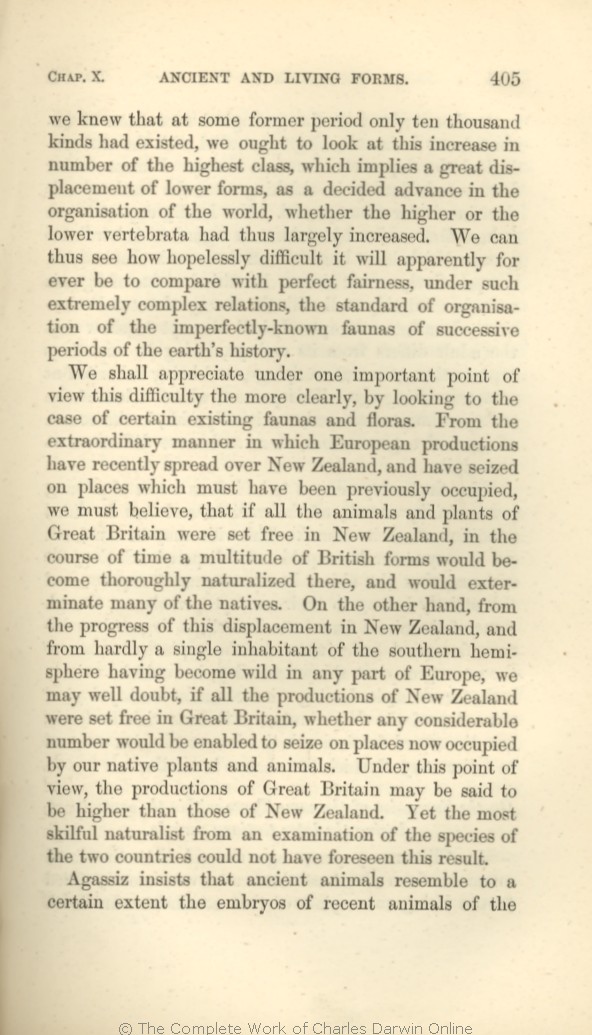we knew that at some former period only ten thousand kinds
had | had 1861 1866 | had 1869 1872 |
| world, 1861 1866 | | world. 1869 1872 |
| whether 1861 1866 | whether 1869 1872 |
| the 1861 1866 | the 1869 1872 |
| higher 1861 1866 | higher 1869 1872 |
| the 1861 1866 | the 1869 1872 |
| lower 1861 1866 | lower 1869 1872 |
| vertebrata 1861 1866 | vertebrata 1869 1872 |
| had 1861 1866 | had 1869 1872 |
| thus 1861 1866 | thus 1869 1872 |
| largely 1861 1866 | largely 1869 1872 |
| increased. 1861 1866 | increased. 1869 1872 |
| can 1861 1866 | can 1869 1872 |
| will apparently for ever be 1861 1866 |
| is 1869 1872 |
| periods 1861 1866 | | periods. 1869 1872 |
| the 1861 1866 | the 1869 1872 |
| earth's 1861 1866 | earth's 1869 1872 |
| history. 1861 1866 | history. 1869 1872 |
|
|
We shall appreciate
under one important point of view | under one important point of view 1861 1866 |
| OMIT 1869 1872 |
| the 1861 1866 1869 | the 1872 |
| the case of 1861 1866 |
| OMIT 1869 1872 |
| occupied, 1861 1866 1869 | | occupied 1872 |
| we must believe, 1866 1869 |
| we may believe, 1861 |
| by the indigenes, we must believe, that 1872 |
| that if 1866 1869 | | if 1861 1872 |
| in the course of time 1866 1869 |
| that in the course of time 1861 |
| OMIT 1872 |
| become 1861 1866 1869 |
| in the course of time become 1872 |
| naturalized 1861 1866 | | naturalised 1869 1872 |
| the progress of this displacement in New Zealand, and from 1866 |
| what we see now occurring in New Zealand, and from 1861 |
| the fact that 1872 |
| OMIT 1869 |
| having 1861 1866 1869 | | has 1872 |
| well doubt, 1866 |
| doubt, 1861 |
| well doubt whether, 1869 1872 |
| whether 1861 1866 | whether 1869 1872 |
| may be said to be higher 1861 1866 |
| stand much higher in the scale 1869 1872 |
| naturalist 1861 1866 | | naturalist, 1869 1872 |
| countries 1861 1866 1869 | | countries, 1872 |
|
|
Agassiz
insists | insists 1859 1860 1861 1866 |
| and several other highly competent judges insist 1869 1872 |
| of 1859 1860 1861 1866 | | belonging to 1869 1872 |
|









